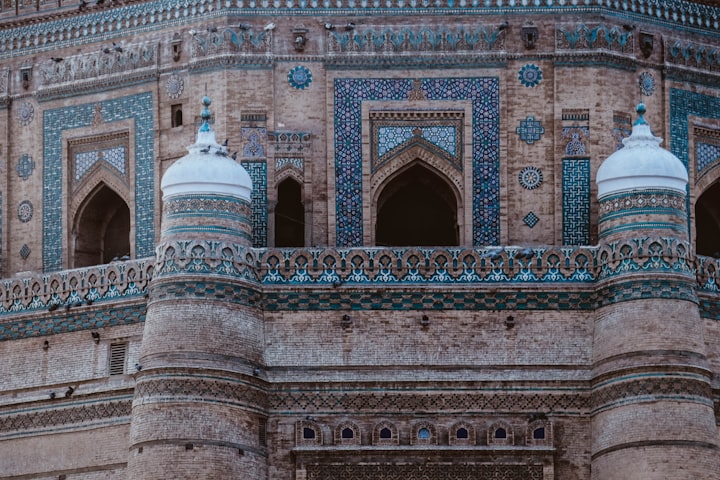Embracing Unity in Diversity: The Rich Tapestry of Pakistan's Culture
Embracing Unity in Diversity: The Rich Tapestry of Pakistan's Culture

Embracing Unity in Diversity: The Rich Tapestry of Pakistan's Culture
Introduction:
Pakistan, a land with a storied history and breathtaking landscapes, is a country that prides itself on its diverse and vibrant culture. Situated at the crossroads of South Asia, the Middle East, and Central Asia, Pakistan has been a melting pot of various civilizations, each leaving its indelible mark on the nation's cultural fabric. In this exploration, we delve into the multifaceted aspects of Pakistan's culture, celebrating the unity that arises from its diversity.
Geographical Diversity:
One of the remarkable features of Pakistan's cultural landscape is the geographical diversity that spans from the mountainous terrains of the Himalayas and the Karakoram Range to the fertile plains of the Indus River. Each region boasts its unique traditions, languages, and customs, contributing to the rich mosaic of Pakistani culture.
Languages:
Pakistan is home to a multitude of languages, reflecting its diverse ethnic groups. Urdu, the official language, serves as a unifying force, fostering communication among people from different linguistic backgrounds. Punjabi, Sindhi, Pashto, Balochi, and others add depth to the linguistic tapestry, creating a vibrant linguistic spectrum that mirrors the nation's cultural richness.
Cuisine:
Pakistani cuisine is a harmonious blend of flavors, with each region offering its distinct culinary delights. From the spicy curries of Punjab to the aromatic biryanis of Sindh, and the flavorful kebabs of Khyber Pakhtunkhwa, Pakistani food is a gastronomic journey that tantalizes the taste buds. The influence of Mughal, Persian, and Central Asian cuisines is evident, showcasing the country's historical connections.
Traditional Arts and Crafts:
The arts and crafts of Pakistan reflect the creativity and craftsmanship of its people. Intricate embroidery, vibrant fabrics, and detailed mirror work characterize traditional Pakistani clothing, such as the shalwar kameez and the ajrak. The art of pottery, tile making, and calligraphy also thrive, with each region showcasing its unique artistic expressions.
Music and Dance:
Music and dance play an integral role in Pakistani culture, serving as a means of expression and celebration. From the soul-stirring qawwalis of Nusrat Fateh Ali Khan to the rhythmic beats of traditional folk music, the diversity in musical genres is vast. The energetic Bhangra of Punjab, the graceful Attan of Khyber Pakhtunkhwa, and the spirited Dhammal of Sindh are just a few examples of the diverse dance forms that captivate audiences.
Religious Diversity:
Pakistan is home to people of various religious beliefs, with Islam being the predominant faith. The country's constitution guarantees religious freedom, allowing religious minorities, including Hindus, Christians, Sikhs, and others, to practice their faith freely. This diversity fosters an environment where different religious communities coexist, contributing to the nation's cultural tapestry.
Festivals and Celebrations:
The calendar of Pakistan is dotted with vibrant festivals that celebrate religious, cultural, and national events. Eid-ul-Fitr and Eid-ul-Adha mark the end of Ramadan and the annual Hajj pilgrimage, respectively, bringing communities together in joyous celebrations. Diwali, Christmas, and Holi are celebrated by religious minorities, showcasing the spirit of unity in diversity.
Hospitality and Social Customs:
Hospitality is deeply ingrained in Pakistani culture, and guests are considered a blessing. Traditional customs like mehndi (henna), dholki (musical gatherings), and the exchange of gifts are integral parts of social gatherings. The concept of "mila jula ke" (together and united) emphasizes the importance of community and solidarity.
Challenges and Opportunities:
While Pakistan's cultural diversity is a source of strength, it also faces challenges. Striking a balance between preserving traditional values and embracing modernity is an ongoing process. Moreover, economic disparities and regional tensions pose hurdles to fostering a truly inclusive society.
Conclusion:
In conclusion, Pakistan's cultural diversity is a testament to the resilience and richness of a nation shaped by centuries of history and myriad influences. The fusion of languages, cuisines, arts, and traditions creates a harmonious blend that defines the Pakistani identity. Embracing this diversity, Pakistan continues to evolve, creating a vibrant tapestry that reflects the unity found in its myriad expressions of culture.
About the Creator
Muhammad Adil
i am Medical student, writer, peace activist. Creating impactful content on medicine, wellness, books, and peace. Join their journey on Vocal Media. #InspireChange #MakeADifference






Comments
There are no comments for this story
Be the first to respond and start the conversation.